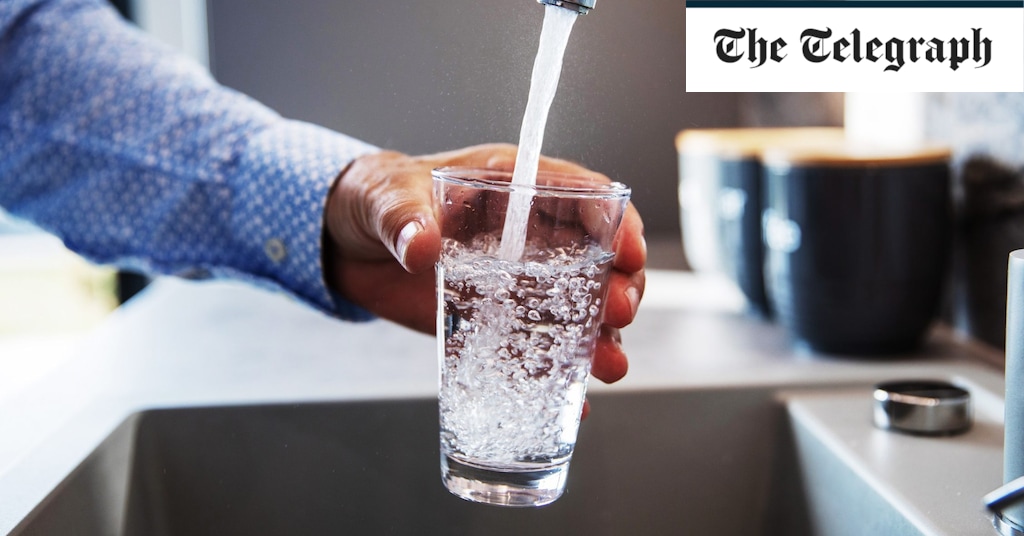Being able to drink tap water wherever you are in the UK is a point of national pride and a far cry from the alternative we’re often faced with on holiday – lugging around large bottles of water and relying on them to even brush our teeth.
But Britain’s gleaming drinking water record became tarnished last week after thousands in Devon were told to boil their water after a diarrhoea-causing bug infiltrated the local supply.
“These events are rare and we have robust treatment systems in place to reduce risk,” says Peter Jarvis, a professor of water science and technology at Cranfield University. “When events do happen, we need to investigate quickly, protect the public from exposure, find the route cause and make sure it doesn’t happen again.”
It shows that the risk from water isn’t confined to our waterways, which are thought to be increasingly making people ill as they ingest faeces while swimming, rowing and canoeing due to the presence of sewage, according to a report today from the Royal Academy of Engineering, which has been backed by England’s chief medical officer Sir Chris Whitty.
“The drinking water system is a completely different system and there’s full provision of public health and treatment,” says David Butler, a professor of water engineering at the University of Exeter and one of the study’s authors. “Though that sometimes can also go wrong, as we know.”
How safe is tap water in the UK?
The UK has some of the safest drinking water in the world.
The Drinking Water Inspectorate, which oversees the quality of water in England and Wales, reported that 99.7 per cent of more than three million water tests conducted in 2022 met its strict standards, which measure more than 40 different parameters, including colour, taste and levels of minerals and pathogens.
However, there were more than 1,000 breaches logged by the agency, when contaminants such as bacteria (coliform and E. coli) and metals (such as lead and iron) were detected.
“Drinking water quality in the UK is generally very good,” says Prof Jarvis. “We are consistently ranked at, or near, the top in international comparisons of water quality.”
“However, our drinking water infrastructure is ageing and incidents of contamination do occasionally happen,” says Vanessa Speight, a professor of integrated water systems at the University of Sheffield.
The most recent example took place in Devon, where dozens of people tested positive for cryptosporidium, a microscopic parasite that causes diarrhoea, vomiting and a fever and can last around two weeks, while more than 100 reported symptoms. As a result, around 17,000 households were told to boil their drinking water.
When cryptosporidium was detected in water supplies in North Lancashire in 2015, it led to 712,000 households being told to boil their tap water, while in 2013, another outbreak was reported to cause illness in up to 36 people. One of the worst outbreaks was in 2005 in north-west Wales, where over 200 cases of illness were confirmed.
“There is rightly a significant outcry and need for detailed investigation when rare events like this happen,” says Prof Jarvis.
“When our system doesn’t operate correctly, it’s a very noticeable situation,” says Prof Butler. “Sociologists call water an invisible good and that’s because the system works invisibly in the background. You only notice it when it goes wrong, such as in the [cryptosporidium] case.”
What is in tap water?
Chemicals are routinely present throughout the country’s water supply.
Chlorine is deliberately added to kill harmful bacteria, while fluoride is put in by some local authorities to reduce tooth decay. Other chemicals such as calcium and magnesium occur naturally.
However, metals and pathogens can be present, when they shouldn’t be. These include lead and nickel, as well as E. coli and coliform.
How do I know if my tap water is safe?
Generally, people in the UK can drink tap water with confidence, unless their water company has informed them differently.
However, there are some things to watch out for. Tap water should be clear and not smell, so if it appears orange, brown or black it could signal a plumbing problem.
“If people notice a difference in the taste, smell or appearance of the water, then they should contact their water company directly,” says Prof Jarvis. “They may then advise that the water should not be consumed until testing has identified why the water quality has changed and whether this presents a public health risk or not.”
For people who want to check their water quality, there are some home water tests that can be purchased online. However, Prof Jarvis isn’t confident about their accuracy. “There are sometimes dipstick type tests that will return an indicative range of values for a water quality parameter – these would need a laboratory analysis to confirm the results,” he says.
“For greater accuracy, people can send water samples away to laboratories that will use more sophisticated analysis, but this is usually very expensive and only provides a single snapshot, so may not provide a complete picture of the risk,” Prof Jarvis adds.
However, there are no home tests available to test for microbiological contaminants such as cryptosporidium, as these require special sample collection and preparation techniques, says Prof Speight. “People can become more active advocates for their drinking water quality by checking the monitoring results posted by their water companies and by quickly reporting water that looks, smells, or tastes different than normal,” she adds.
